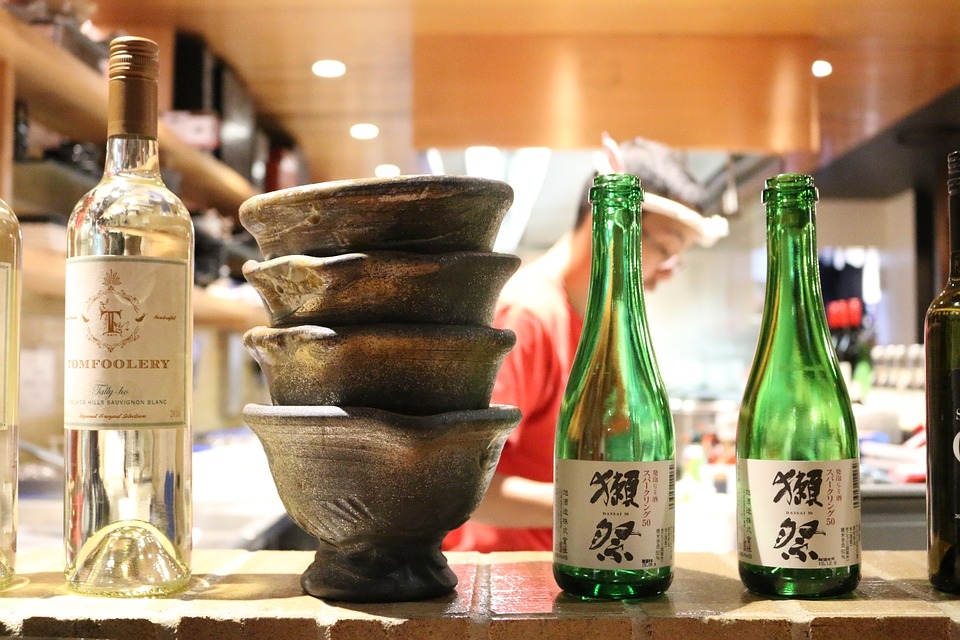Japanese wine: Sake

Sake is a Japanese rice wine made by fermenting polished rice with water and catalysts koji spores and yeasts. By dusting the rice with Koji spores, the starches in rice are converted into sugar that is eaten by yeasts to make alcohol.
Here's an overview of how sake is made:
1. Brown rice
2. Rice polishing or milling
3. Rice soaking and washing
4. Rice steaming - This helps to bring out the rice starch and sterilize.
5. Saccharification or making koji - This involves sprinkling koji mold and massaging the rice portion to convert the rice starch into sugar.
6. Making yeast starter (this involves making and sustaining yeast fermentation and controlling unwanted fungus and bacteria/yeast by using lactic acid).
7. Fermenting - Adding the yeast starter (made from lactic acid, water, koji rice and yeast)
8. Pressing
9. Filtering - This is done by using charcoal to remove rough flavour and colour.
10. Pasteurizing
11. Maturation and Storing
12. Diluting
13. Secondary Pasteurizing
14. Bottling
What are the paired foods for sake?
Sake goes well with earthy flavours such as:
* chocolate
* barbecued foods
* roasted chicken
* tempura.
Fruity sake is best paired with:
* Pork
* Spicy tuna tartare
* Salads
* Pork
What are the Sake classifications?
Sake is classified according to its purity and flavours.
* top classification (junmai daiginjo) - Refined, light and fruity
* second classification (junmai ginjo)- not refined as daiginjo but also light, fruity, and cold.
* third classification (junmai and honjozo) - Brings out the rice flavours.
Tags: sake, japanese wine, japanese food, japanese drinks, japanese beverages, sake drink, alcoholic drinks, japanese cuisine, gastronomy
October 05, 2023
May 18, 2023
June 17, 2022
June 16, 2022
May 27, 2022
May 20, 2022
May 18, 2022
May 12, 2022
Signup
- Sign Up
- Already a member? Login Now!
